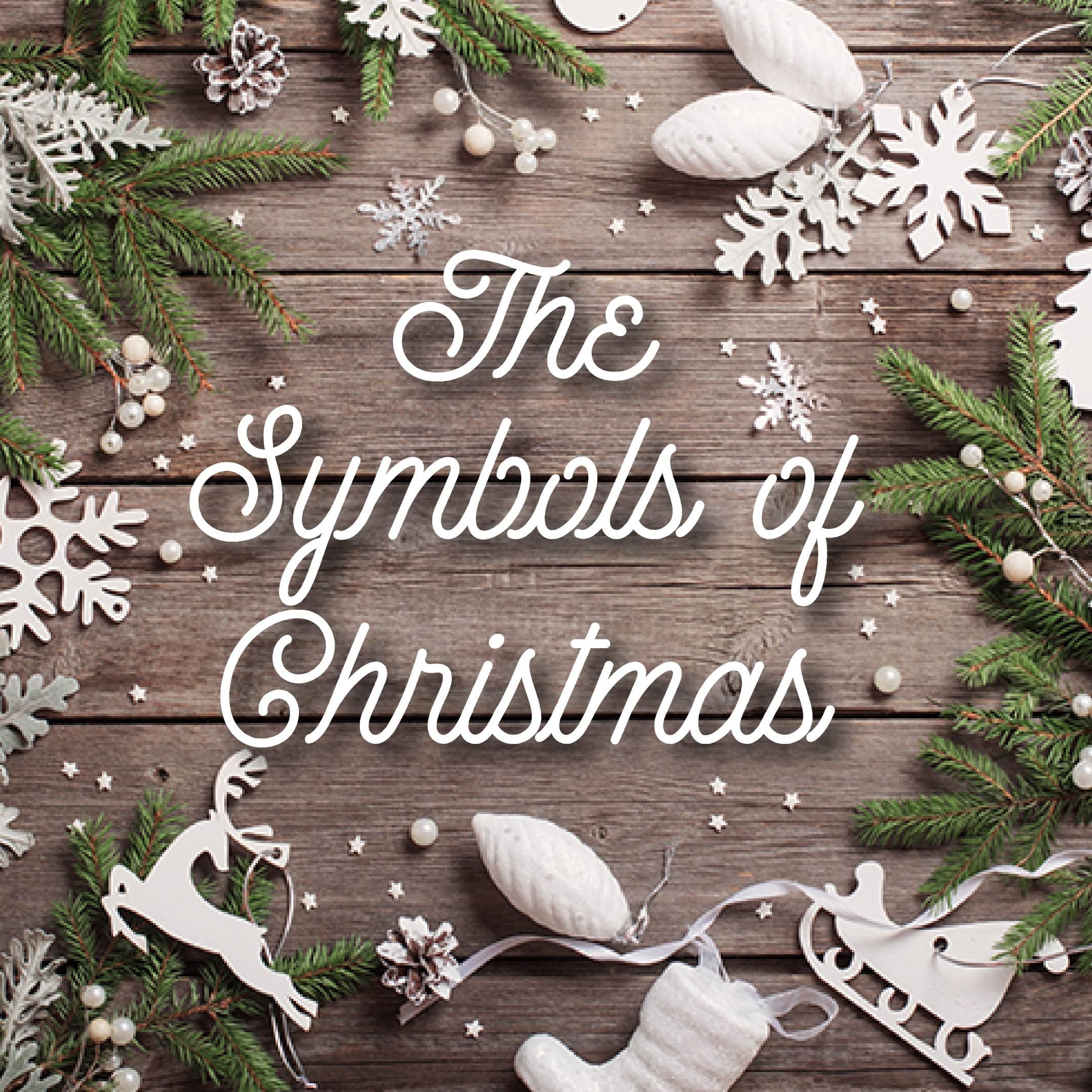Signs of His coming
One Christmas, as the plane I was riding in approached its landing, I noticed how many houses were ablaze with Christmas lights and thought, “Lord, many of those people may not even realize it, but their homes acknowledge that the Light of the world has come.” It reinforced in me a conviction that, lodged in every one of the symbols of Christmas, there is a very deep and rich truth. That truth has not been imposed by religious tradition. That truth exists because spiritual understanding gave rise to the symbolic expressions we are familiar with. Over the centuries, people have celebrated that understanding via symbols. At Christmas, there are innumerable, inescapable signs of the fact that God came to earth. Whether intended as a witness to Him or not, society has been captured by God’s love—the season rings with it!
Unfortunately, many people, in the name of spirituality, harbor a sour spirit toward the decorations and symbols of Christmas. It isn’t out of meanness, but simply that they don’t understand the Lord’s call to recognize the meaning and purpose of the symbols of our celebration.
For example, in Exodus 12, the Lord instructed the people how to observe the Passover so that in years to come, when their children asked what was meant by this symbolic celebration, they could explain it. The same dynamic occurs in Joshua 4, when the Lord instructed one man from every tribe to take a huge boulder from the bed of the Jordan and, together, erect a monument to symbolize that they had crossed it by His miracle grace.
Ready to give a reason
This particular combination of texts points to the power of symbols to teach children truths from the living God at seasons of celebration. The passage in 1 Peter 3:15 speaks of our communication with those who would wonder if we have reasons for the hope that is in us. It says: Be ready always to give a reason [defense] to anyone who asks you. The word “defense” is used in the sense of logical reason, the same way a person presenting a case makes a logical presentation. Be able to give a logical, sensible presentation as to why you do what you do.
If the symbols of the season are implemented out of understanding their rich and powerful meanings, we can imprint the minds of our children with the beauty of the truth that they represent. This is sowing seed so that when they come into adulthood, the truth is there as an inescapable testimony that may be transmitted joyfully to their own children.
The symbols of Christmas can also impact those around us—friends, associates, neighbors—with the truth, if we are ready to give a reason. Without being pushy or religiously objectionable in the way we communicate, the words we speak to others about the symbols of the season can have a loving, long-term impact on them.
Traditions which testify
The following four symbols of Christmas are “traditions which testify” because they are born of the truth.
The Advent Wreath — The testimony of a complete Savior
The Christmas Tree — The symbol of a broken curse
Bells and Bows, Holly and Ivy — The tokens of a new Covenant
Saint Nicholas — The longing for a loving Father
The Advent Wreath
The Advent Wreath represents the testimony of a complete Savior. Advent means coming or arrival, and it points toward the coming of Christmas. Advent indicates not only that Christmas is coming, but also that the Lord HAS come, and that the Lord IS coming again. We celebrate the fact that, if the prophecies were fulfilled by His first Advent, we are guaranteed that the prophecies about His second Advent are going to be fulfilled as well.
At our church, we use an Advent candelabra to represent the Wreath. In the four weeks leading toward Christmas, a candle is lit each Sunday to indicate that we are drawing closer and closer to Christmas.
In some traditions, the Advent Wreath involves the reading of portions of Scripture that relate to certain things. The arrangement of candles on the Advent Wreath can be ornate, or it may be as simple as four candles on a small cake.
The Prophecy Candle — His first coming
The Bethlehem Candle — His actual birth
The Angel’s Candle — The announcement He had been born
The Shepherd’s Candle — The people who responded
My approach to the Advent Wreath has always been centered more in the complete presentation of the Savior and His glory given to us in His coming to earth: each candle represents one of the four Gospels, focused on a particular facet of the Person of Jesus:
Matthew — Jesus as King (Theme text: 4:17)
Mark — Jesus as God’s Servant (Theme text: 10:45)
Luke — Jesus as Healer (Theme text: 4:18, 19)
John — Jesus as Savior (Theme text: 20:31)
With regard to giving the reason for the hope that is in you, whether in a church family or in your own home, the Advent Wreath conveys the testimony of a complete Savior. It’s a powerful symbol of Christmas and can become an beautiful means of understanding. Inviting people to dinner on the Sundays of this month and lighting the candle before the family bows for prayer is one way to plant seeds of truth.
The Christmas Tree
Probably the foremost symbol of the season is the Christmas tree, the symbol of a broken curse. There’s significance in the traditional choice of the evergreen tree: it represents everlasting life. Imagine the center of this tree stripped of its branches—a bare, vertical trunk. Then, taking one of the larger, lower branches, imagine creating a cross. The Christmas tree symbolizes everything that happens at the Cross of Jesus Christ—it is the statement of eternal life.
At the foot of the tree we exchange gifts. The tree is ornamented and bedecked with beauty. Why? Because it was on a Tree that God hung His greatest Gift to man and offered it to us. He calls us to the foot of the Tree to receive that greatest of all gifts from Him. It was on that Tree where He bore the curse for us—the curse of death (Galatians 3:13).
This picture of the Savior, bearing the curse for us, is the essence of the concept of the Christmas tree. Instead of a barren tree, we have a beautiful, ornamented evergreen. Instead of a barren life and judgment upon us because of our sin, God has borne our sins on our behalf and decorated our lives with the beauty of His everlasting life. The exchange of gifts is not a surrender to commercialism, but a matter of saying that because of what He’s given us, He’s overflowed His love in our hearts to give to one another.
Symbols of Christmas are opportunities to imprint minds with truth and to celebrate with rich meaning. Join with your family and declare: “Lord, we gather today to celebrate Jesus. Thank You for Your love in our family because of Your love for us. And the gifts we share with one another, we share as we remember the Great Gift You gave us of Jesus.”
Bells and Bows, Holly and Ivy
Bells and bows, holly and ivy are the tokens of a new Covenant. The bells are symbolic of liberty—the freedom we have in Christ. The most famous bell on the planet (the Liberty Bell in Philadelphia, Pennsylvania) is engraved with the words of Leviticus 25:10: “Proclaim liberty throughout the land to all the inhabitants thereof.”
The freedom the Bible speaks of is freedom from sin and condemnation (Romans 8:1). The token of that in the Old Testament is in the bells on the robes of the High Priest, which were the declaration that the sacrifice had been accepted, and sin had been forgiven. Bells are a statement of the freedom we have from shame, condemnation and guilt. Christmas bells ought to bring that to our minds. It’s an appropriate way to celebrate. When you hear jingle bells, don’t just think of the sleigh going down the street or the country road. Think about how we have been made free from condemnation, and let the bells celebrate the Biblical concept.
Then there are the bows that band our gifts—those expressions of our love or gratitude, appreciation, respect or esteem. In Hosea 11:4, the Lord says, “I will draw them with gentle cords, with bands of love.” God gave us His Son, that’s the gift, but God wrapped that gift in His love, and the beauty of the bows is the gentle love, tenderness, and beauty in which He has given us Jesus. The gift is more important than the decoration, but we want people to receive it in a lovely presentation.
The holly is comprised of a beautiful leaf that has prickly tips on it and signifies that salvation has come with the pain of suffering, and at a great price. The berries of the holly are symbolic of the blood of Christ. This concept has been applied to holly for ages.
Ivy, which is often a part of the festooning, has historically been symbolic by its clinging nature and the closeness of its grip. It represents the nearness of God’s love toward us, that He will not go away when tough times come. He is “a friend that sticks closer than a brother” (Proverbs 18:24). The ivy of our decoration themes the clinging quality of the love of God.
St. Nicholas
The fourth symbol of Christmas is perhaps the most debated and argued over is St. Nicholas. Nicholas of Myra was a real person—a pastor and teacher who lived over 15 centuries ago. The tradition of his absolutely selfless giving and graciousness goodness toward people in need left a mark on church history. As century followed century, Nicholas of Myra was later canonized (“sainted”) and became patron saint of different worshipers in Europe. My mention of that is not to validate the concept of the canonization of people—only God can make a saint; the church can’t. The Lord is the One who has sainted us through the blood of Christ.
St. Nicholas and Santa Claus are the same person. The derivation of “Santa Claus” in the century and a half or so in North America is the result of immigrants coming from Europe who pronounced it, “Santanicholas.” People who did not speak their language picked it up as “Santaclaus.”
Now, the elf-like, little ho-ho-ho guy with the belly that shakes like a bowl full of jelly, the reindeer and the sleigh—all of that came about as the result of a poem which was, interestingly enough, written by a pastor. It wasn’t written for the purpose of spiritual insight. It was written just for fun with his kids. All of those ideas came out of one of the most quoted poems in the world: “A Visit from St. Nicholas,” or more commonly known as “The Night Before Christmas.”
Many of us are aware that there are sectors of the Church (by no means the majority) who will roundly curse the idea of Santa Claus and suggest that if you even mention the name, that somehow you have compromised the true spirit of Christmas. That’s an unfortunate surrender to distortions that time has brought about.
My purpose is not to promote Santa Claus, nor to urge you, necessarily, to acknowledge him in any way if that’s something you’d just as soon not do. But I like for us to capture a sense of something that Santa Claus represents to our society. Deep in the psyche of our society there is something so broken with regard to father figure that Santa Claus represents a happy daddy who loves them and gives them good things out of that—something which, in a very real way, is what everyone wishes they had. To many people, Santa represents the fulfillment of their longing for a loving daddy. Sensitivity on our part to that cultural symbol of the season can help us to be more available to present to people what it is they are really looking for at this time of year and always: the love of Father God.
In Britain, Santa Claus is called “Father Christmas.” Father God IS the Father of Christmas, because He gave us the gift of His Son Jesus. The fact is, Father God is a happy God (In 1 Timothy 1:11 it says, “…according to the glorious gospel of the blessed God which was committed to my trust.” Here, the word translated as “blessed” is actually the word, “happy.”)
I don’t think it’s necessarily our place to interpret Santa Claus to society this way; rather I think it’s our challenge to recognize that they are searching, and then to be what Father God wants us to be: His people, available to a world that is looking for somebody to reach to them in the love of God, showing acceptance, generosity, and kindness.
To many of us who have never known the love of a natural father, Father God would say, “I’ll adopt you; come to Me.” He’s given us—who’ve done nothing to deserve it—the ultimate Christmas gift of His Son, the Lord Jesus, who has paid for our sins and redeemed us completely. He not only wants us to come to Him for forgiveness; He wants us to be part of His family.
We live in a world that cries out for that, and you and I have been made the agents of the love for which they are searching. Who will you invite to your house for dinner? Who gets to share your tree with you? With whom will you exchange a gift that says you care? Something about this season offers unique opportunity.
We live in a world full of symbols—people illuminate their houses, put up their trees, give gifts to one another, and they have no idea what any of it means. We don’t need preach the meaning to them, but we are to embrace the significance of those symbols by sharing the reality of the truths they represent with people.
In doing this, we will impact the world with the love that the Father has given—not only of eternal life, but in the hope of knowing there is a living Father who loves us, receives us, and has poured forth His Spirit to adopt us, that we may come into His arms and say: “Abba Father, Daddy God, today I receive Your love.”
Copyright 2014 by Jack W. Hayford, Jack Hayford Ministries. All rights reserved.



